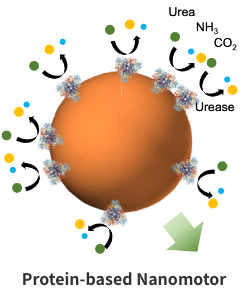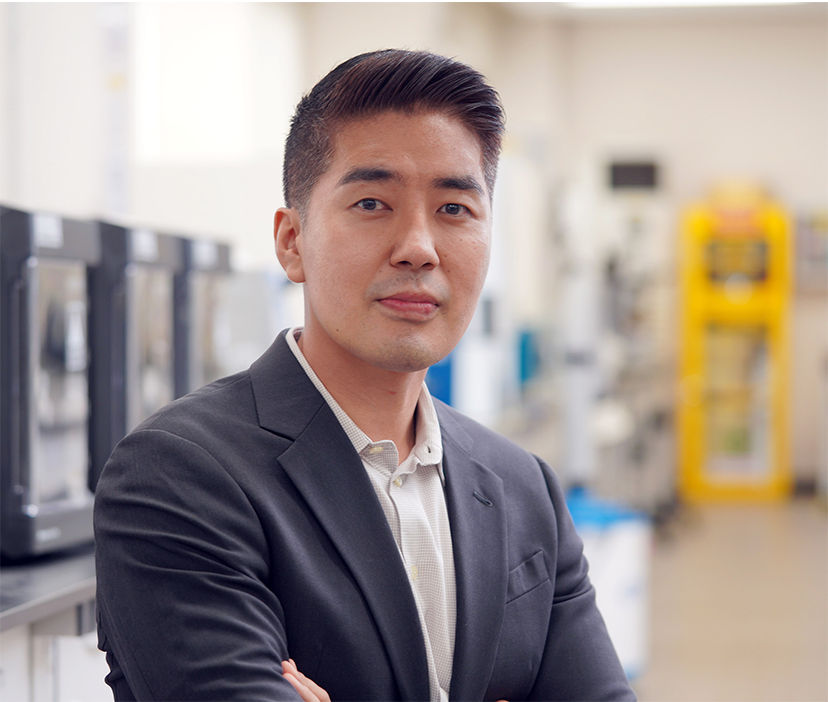

BIOMEDICAL TECHNOLOGY

Biomedical technology
Biomedical technology is recognized as a key technology that can create enormous economic opportunities in the fields of life sciences, medicine, environment and energy. We are developing new polymer-based soft materials, including biopolymers, such as nucleic acids and proteins, and biomimetic materials. Our faculty also seeks to develop diagnostic and therapeutic wearable devices, deformable neurosensory systems, biosensors, artificial prosthesis, soft robots, and more.
Biomedical technology is recognized as a key technology that can create enormous economic opportunities in the fields of life sciences, medicine, environment and energy. We are developing new polymer-based soft materials, including biopolymers, such as nucleic acids and proteins, and biomimetic materials. Our faculty also seeks to develop diagnostic and therapeutic wearable devices, deformable neurosensory systems, biosensors, artificial prosthesis, soft robots, and more.
Biomimetic Soft Materials
Soft material is a generic term for a group of molecular substances, such as colloids, macromolecules, liquid crystal emulsions, membranes, polymers, gels, etc. In particular, polymers can change shape by molecular motion, creating large entropy. Thus, polymers exhibit physical properties dominated by entropy such as rubber elasticity.
Our research focuses on the development of intelligent soft materials such as stimuli-responsive gels and polymers. Stimuli-responsive gels are able to generate mechanical energy by deforming their shape arising from chemical changes of composing polymers in response to stimuli. By utilizing these characteristics, various applications such as soft robots, sensors, and energy devices are possible. To develop more intelligent and sophisticated man-made soft materials, it will be important to understand the fundamental operating system and structural engineering abundant in natural and biological systems.

Biomolecular Materials with Cellular Functions
To maintain a life, a cell which is composed of various components (e.g., genes, receptors, enzymes, and membranes) performs incredible biological functions, including gene replication, enzymatic reactions, target recognition, and molecular transport. The cellular functions arise from unique 3D nanostructures of biopolymers, such as nucleic acids (DNAs/RNAs), proteins, and saccharides (carbohydrates). We create synthetic biomolecular materials that mimic or transform the cell’s molecular functions by exploring innovative technologies such as molecular design and directed evolution. The scope of applications for the synthetic cellular components is wide; we not only challenge the fields of traditional biotechnology, such as development of high-performance biosensors and highly effective therapeutic agents, but also pioneer creative tasks, including actualization of artificial cells by elaborate control of cellular functions.

Artificial Electronic Skins for Sensory Disorder and Robots
Overcoming the sensory disorders has bene one of the long-standing challenges. In particular, knowledge of the signal generation, signal transmission in the somatosensory nervous system, and the learning process of the brain is still at the early stage. Understanding of the somatosensory nerve system can be used in various fields, such as restoration and overcoming of lost sensations, artificial prosthesis, artificial skin for robots, electroceutical treatment, healthcare devices, and remote medical operation. We aim at realizing the artificial realistic skin with a deformable neurosensory system. We try to apply the artificial skin to overcome human tactile disorders, to realize on-skin human healthcare and implantable healthcare devices, and electronic skins for robots.

Smart Biomedical Nanomaterials
A variety of diagnostic and therapeutic devices are routinely used in the clinic. These devices have a familiar look as items plugged in the wall or placed at patients’ bedsides. Recently, many new ideas have been proposed worldwide for the realization of implantable or wearable functional devices. We develop emerging multifunctional nanomaterials critical to the advent of next-generation implantable and wearable healthcare devices. Currently, our main research topics include smart contact lenses for diabetic diagnosis and therapy, and intraocular pressure monitoring and control of glaucoma patients, nanomotors for innovative drug delivery systems, and smart hydrogels for bioengineered cell therapy. On the basis of these great efforts, we are trying to realize the futuristic mobile healthcare and personalized medicine in collaboration with PHI BIOMED Co. founded by our lab.



Bioprinting and Organic Printed Electronics

Smart Healthcare Biomaterials – Artificial Organs
Healthcare engineering (especially developing artificial organs) is an interdisciplinary field aimed at maintaining, restoring, and promoting the normal function of organs/tissues using live cells by incorporating concepts from biomaterials, engineering, biological sciences, and medicine. However, engineering cell culture environments that mimic the 3D dynamic nature of tissues at the biomaterial-cell interface is a major challenge. Even with advanced manufacturing techniques such as 3D printing, it is difficult to produce 3D complex and dynamic structures of soft hydrogels. Smart biomaterials including self-folding biomaterials ranging from multicomponent hydrogels to stimuli-responsive/shape memory polymers have promising potentials to create cell-friendly structures with 3D complexities and dynamics across a range of length scales that are difficult to achieve with printing and lithography. We aim at developing/designing smart biomaterial systems for potential applications in tissue engineering and regenerative medicine. Furthermore, we try to understand human body/tissue systems as well as biomaterial-cell interface for smart healthcare engineering.










